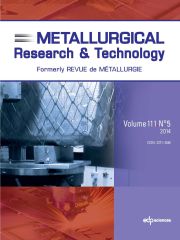No CrossRef data available.
Article contents
A proposal to develop a model for the future strategy ofmaterials industries
Published online by Cambridge University Press: 19 October 2012
Abstract
In this presentation, the development of a simulation model that can examine thelong-term strategy of materials industries, called a material strategy model, is proposed.This model has the following structure: first, the world is divided into a number of areasand a scenario for the demand for end products in the future in each area is provided.Then, the system required to realize the scenario and to minimize CO2 emissionor the total cost is calculated using this model. In other words, the optimization toselect processes in society to minimize total CO2 emission or total cost iscarried out. As a result, the possibility of the long-term scenario; for example, theamount of car production based on population increase and GDP growth, can be discussed byconsidering CO2 emission and consumption of resources. A few simulation modelsto discuss long-term strategy have been developed in the field of energy system studies.In the energy system model, only a few resources such as coal, oil, natural gas anduranium are considered, but, in the material strategy model, it is necessary to examinemany materials and resources. In addition, the material strategy model should have anenergy model as one part of the model. As a first step, a prototype model mainly focusingon iron and steel with their alloys should be developed to show the capability to developthe whole model.
- Type
- Research Article
- Information
- Metallurgical Research & Technology , Volume 109 , Issue 5: Social Value of Materials , 2012 , pp. 299 - 304
- Copyright
- © EDP Sciences 2012


